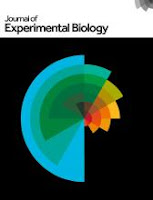 Lidova J, Buric M, Kouba A, Velisek J. 2019. Acute toxicity of two pyrethroid insecticides for five non-indigenous crayfish species in Europe. Veterinarni Medicina 64(03): 125–133. https://doi.org/10.17221/136/2018-VETMED
Lidova J, Buric M, Kouba A, Velisek J. 2019. Acute toxicity of two pyrethroid insecticides for five non-indigenous crayfish species in Europe. Veterinarni Medicina 64(03): 125–133. https://doi.org/10.17221/136/2018-VETMEDAbstract
Pyrethroid insecticides are highly toxic to many aquatic organisms. The aim of this study was to evaluate the toxicity of the commercial products Cyperkill 25 EC (active compound 250 g/l cypermethrin) and Decis Mega (active compound 50 g/l deltamethrin) for European non-indigenous marbled crayfish Procambarus virginalis, red swamp crayfish Procambarus clarkii, signal crayfish Pacifastacus leniusculus, spiny-cheek crayfish Orconectes limosus and yabby Cherax destructor. These data will provide a baseline for potential programmes to eradicate alien crayfish from Europe (EU Regulation No. 1143/2014; Commission Implementing Regulation No. 2016/1141) and are also relevant globally. The 96hLC50 values of Cyperkill 25 EC were 0.09, 0.17, 0.18, 0.19 and 0.30 µg/l for spiny-cheek crayfish, red swamp crayfish, marbled crayfish, signal crayfish and yabby, respectively. In the same order, the 96hLC50 values of Decis Mega were 0.76, 0.16, 0.21, 0.03 and 0.27 µg/l. The toxicity of the insecticides was similar and species-specific, possibly reflecting the size difference of the tested animals. This study shows that cypermethrin and deltamethrin are highly toxic to the tested crayfish species at low concentrations. This high sensitivity, along with the low accumulation in the food chain and short-term persistence in the aquatic environment, suggests that they are suitable biocides for eradicating crayfish in the wild. Stagnant, closed water bodies with newly emerging invaders are ideal sites for possible application, although local conditions must be considered.
Keywords: biological invasion • insecticide • cypermethrin • deltamethrin • eradication • invasive species







